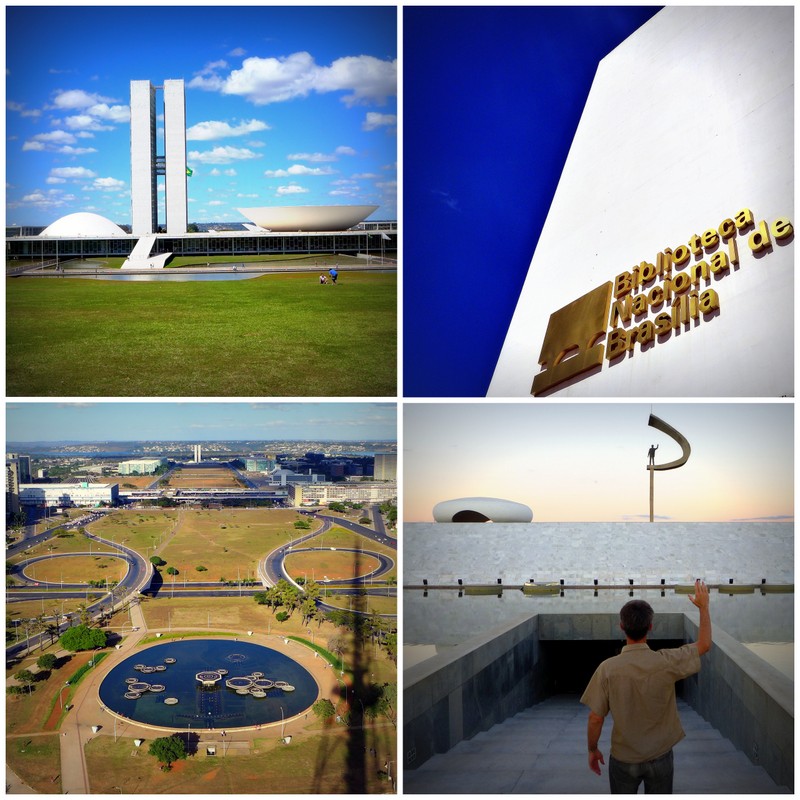
Brasília – Future Present
Brasília has always intrigued me. A modern metropolis located in the middle of nowhere yet a powerful statement of rising Brazil’s great potential – built with spectacular speed under the careful guidance of Brazil’s top designers. I spent a Sunday roaming its methodical streets, marveling at the novel buildings and wide open spaces, yet sensing a bit of emptiness amid its monumental enterprise.
Brazil’s capital has a history of moving around with shifting economic power centers: first Salvador in Bahia for most of the colonial 300 years, then to Rio de Janeiro for another two centuries. All along there was talk of moving the capital to a more central – and politically neutral – part of the country and by 1891 the constitution mandated this.
But it took another 50 years for President Juscelino Kubitschek to get the ball rolling in 1956. Stunningly, Brasília was officially inaugurated just over three years later in 1960.
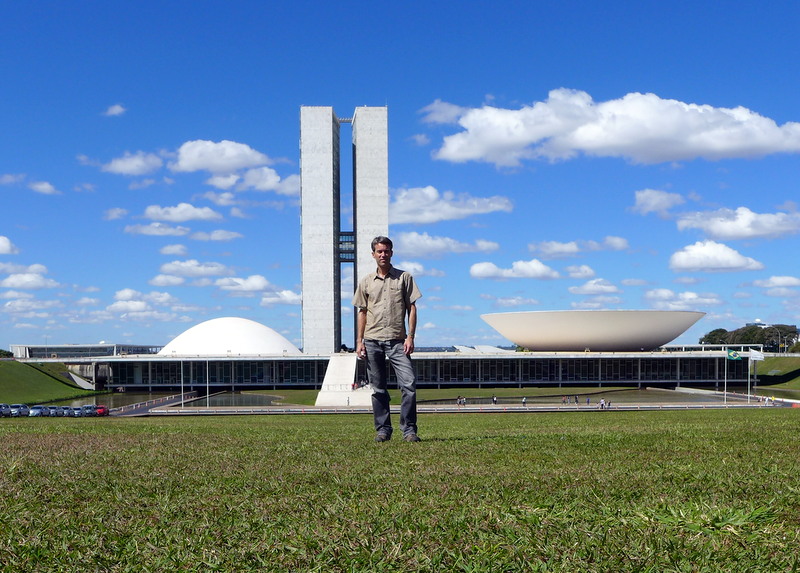
Brasília was conceived by heavyweight trio Oscar Niemeyer (architect), Lúcio Costa (urban planner), and Roberto Burle Marx (landscape designer). Their distinctly modernist approach – fueled by a healthy dose of utopian optimism – prescribed a workable and futuristic metropolis. The result is a fascinating 20th-century creation: impeccably planned streets, purpose-built neighborhoods (Hotel Sector, the Banking Sector, Embassy Sector, etc), and an efficient infrastructure built for a new millennium.
From above, Brasília is shaped like an airplane. The “cockpit” houses the main seats of government in the Praça dos Três Poderes (Plaza of the Three Powers). The “fuselage” centers on the Eixo Monumental (Monumental Axis) lined by the principal monuments and federal administrative buildings. The outspreading “wings” enclose measured superquadras (superblocks) that obsessively propose the number and type of apartments, stores, schools, and parks.
Brasília has both adherents and detractors. Many laud the auspicious planning and consideration for 20th-century urban life. It is the only UNESCO World Heritage city founded in last 100 years due to its epic and ambitious design.
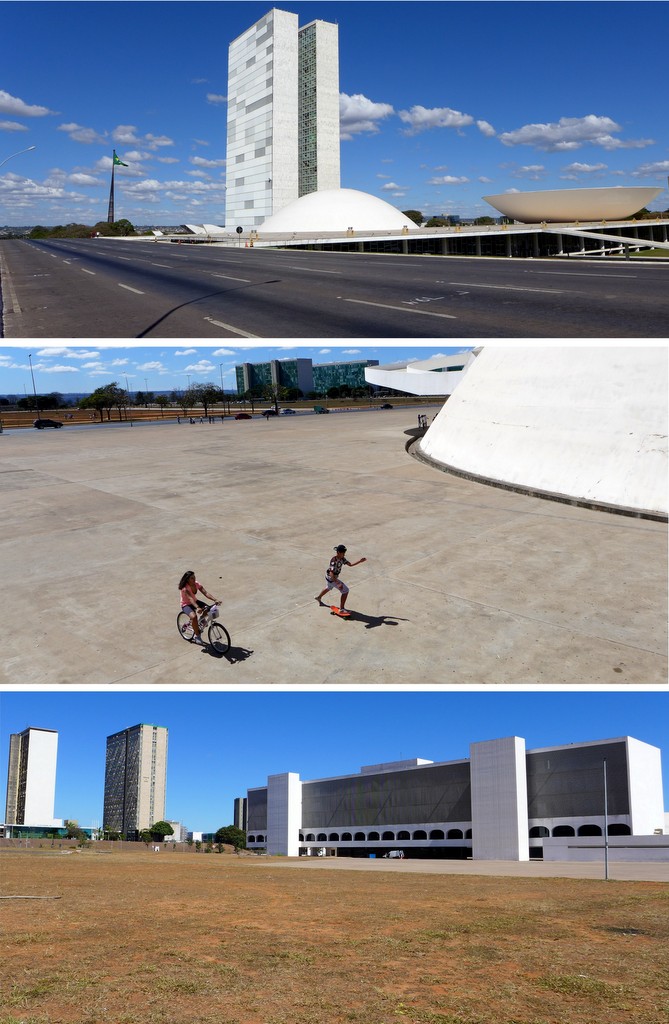
Yet others point out the failure to fully realize this vision. To me Brasília lacks a certain human touch, and this was especially true on a quiet Sunday when government offices are closed. While I was impressed with the idiosyncratic buildings, I felt weighed down by its austere urban expanse. So much of the bleached exterior smacks of artifice and invention – some of it even feels outdated. In Simone de Beauvoir’s words, Brasília exudes an “air of elegant monotony”.
After sightseeing I saw a Brazilian friend I met in Salvador at the Uruguay-Italy FIFA match a few weeks prior. Edmilton (or simply “Ed”) is a government functionary and a transplant from São Paulo like most of the migrant candangos who were not born in Brasília. We drank some beers late in the day and I heard another side to the Brasília story.
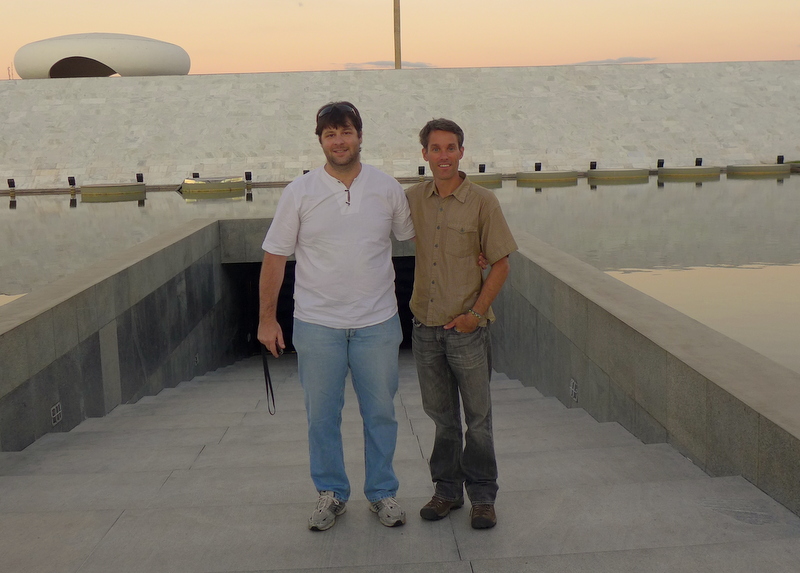
Ed’s enthusiasm for his adopted city is clear: he is proud to work for the federal government and extolls Brasília’s orderliness, efficient public transport and traffic-free roads, and renown cuisine and nightlife. Brasília has a great quality of life compared to other Brazilian cities – and the expanding population, with an annual growth rate of 3%, bears this out.
Brasília’s evolution in a mere half century is praiseworthy – but it is a work in progress. So I’ll withhold judgement for now. After all, Rome was not built in a day.
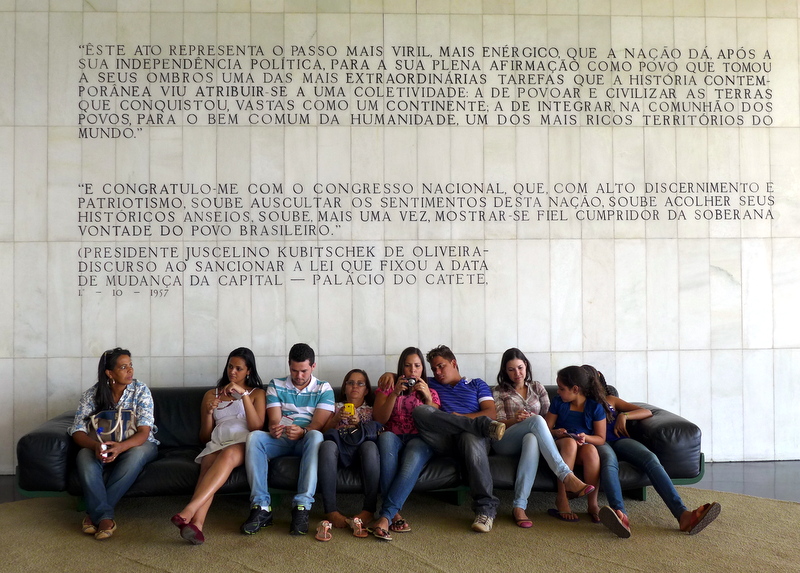
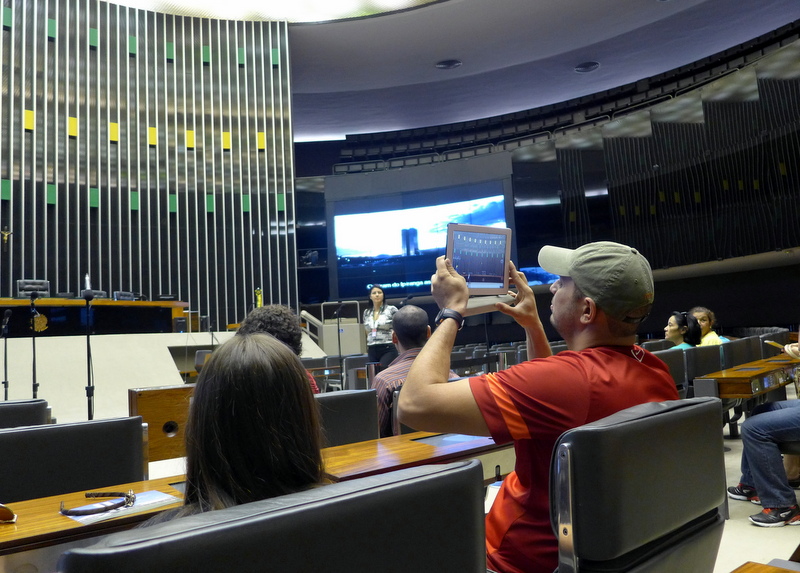

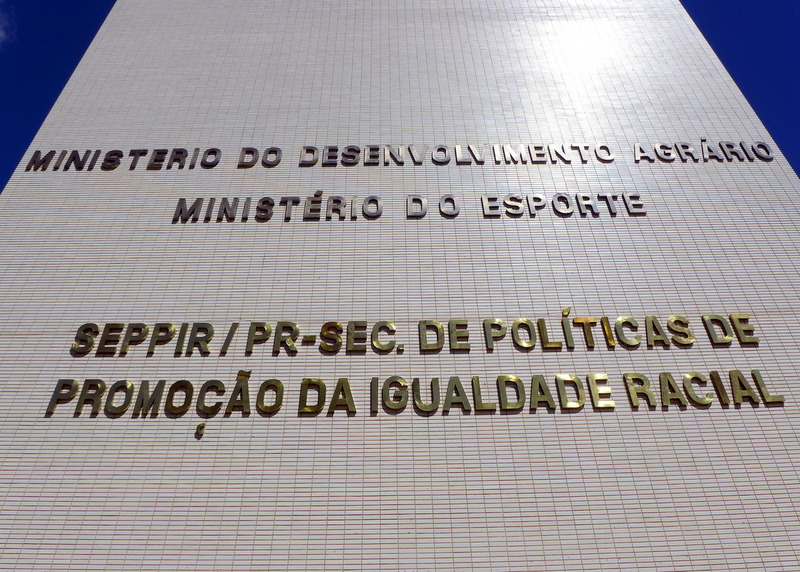
The Esplanada dos Ministérios (Ministries Esplanade) is lined with cookie-cutter government administrative offices.
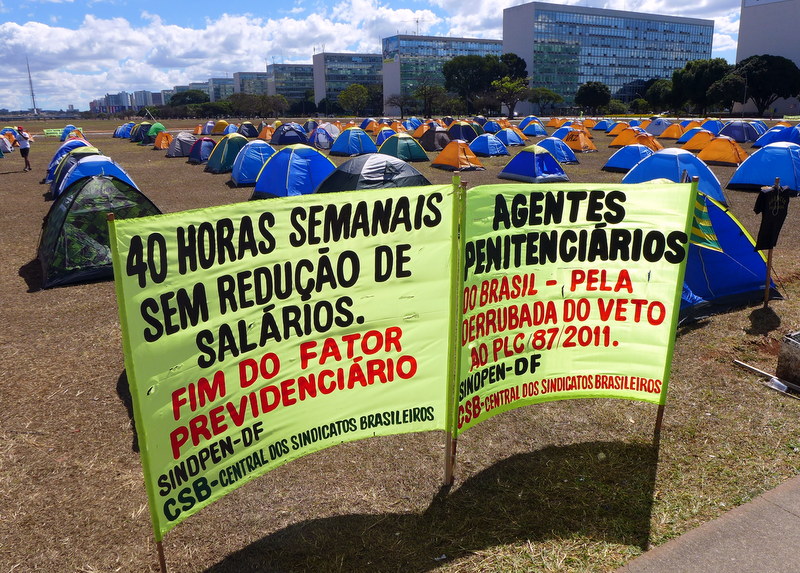
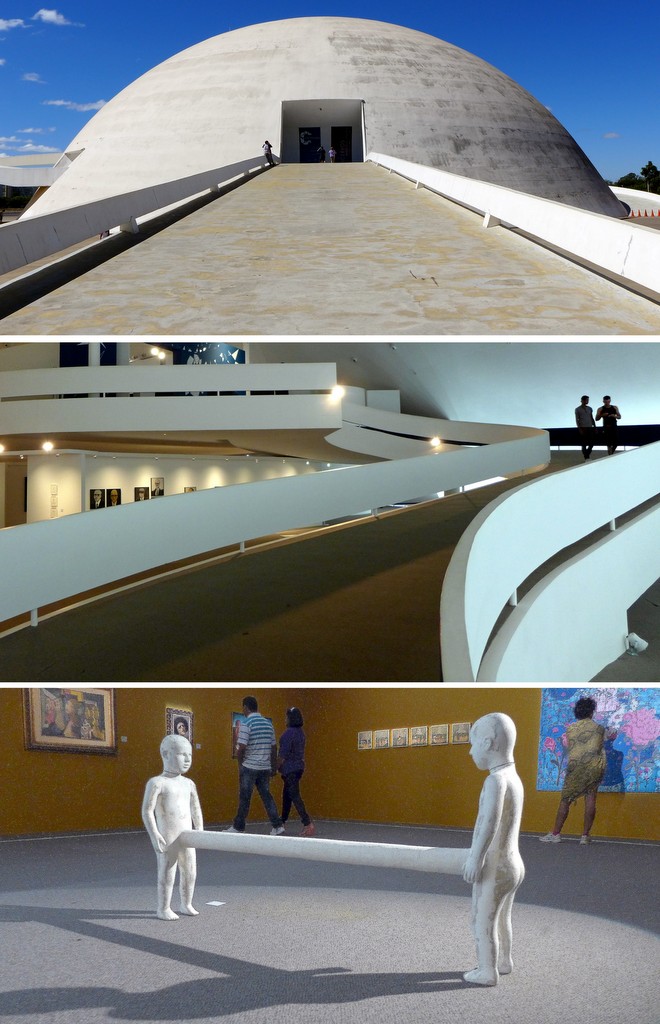
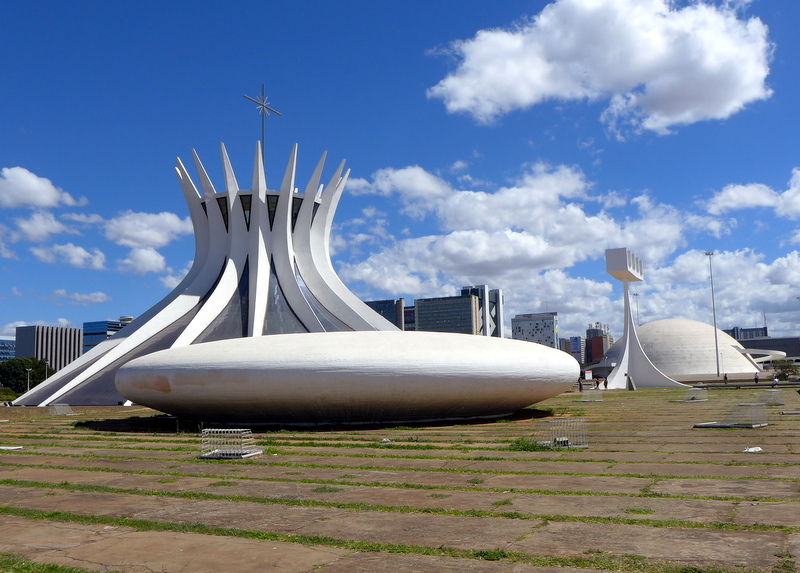
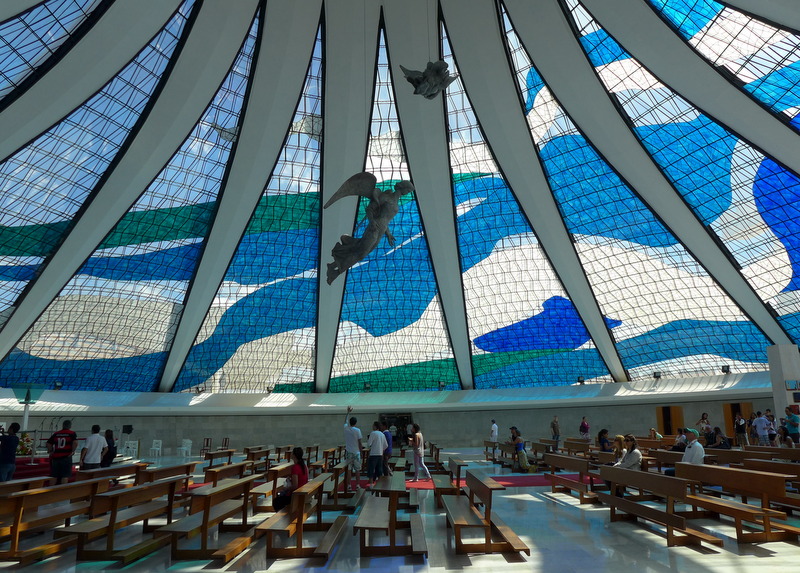
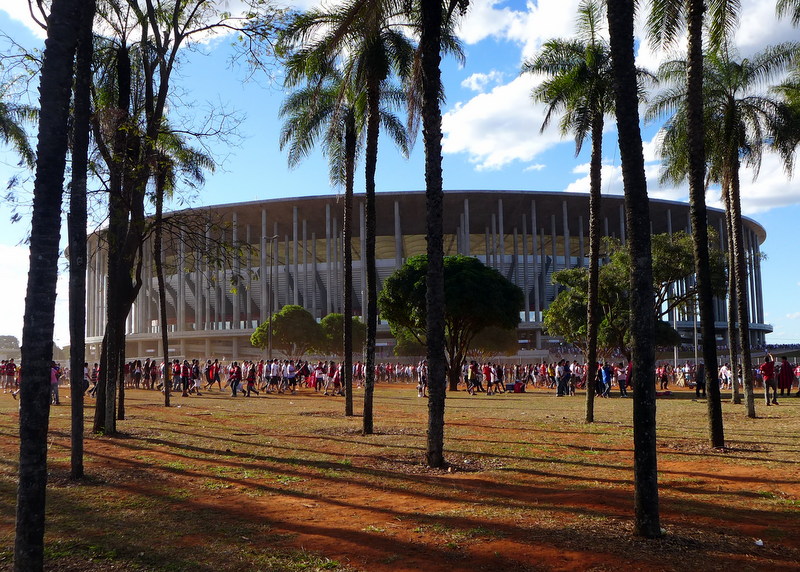
Goiânia – Past Perfect
Another planned city – and just a few hours from Brasília – the capital of Goiás state predates the nation’s capital by some 30 years. Founded in 1933 after years of talk of a new state capital that more suitably represented the changing state economy and demographics. The original capital, which dates from the colonial period when gold extraction was the economy’s driver, was considered too remote from the new agricultural heartland.
Goiânia has a nice layout with wide avenues radiating from the central Praça Cívica (Civic Plaza). Here reside the state government buildings crafted in the Art Deco style which admittedly show signs of wear but nonetheless deserve their recognition as national treasures. The streets are filled with shops, friendly restaurants and residents who greet one another as they go about their business.

What most impressed me is how livable Goiânia is – with well over a million residents, the wide avenues, abundant parks (it ranks second behind Edmonton, Canada as having the largest green area per capita). It also merits bragging rights as having the lowest number of favelas (slums) of any Brazilian city.
As I whiled away the afternoon in the lush Bosque dos Buritis park, I couldn’t help think of how different Goiânia is from Brasília – how much more real it feels despite its similar planned origin. Its more traditional design centers on an abundance of green spaces that naturally offer an escape from the concrete jungle of most cities today. Goiânia doesn’t immediately “grab” you as Brasília does with its originality. But it provides many civilizing features lacking in the nation’s capital.
Goiânia simply feels more human despite its peeling façade – perhaps it’s Brasília’s older, somewhat wiser sibling. Maybe in three more decades as Brasília ages its wrinkles will reveal its mortal side, a city that doesn’t brashly live for the future but finds a way to also express the here and now. In the meantime, Brasília seeks to find its true skin.
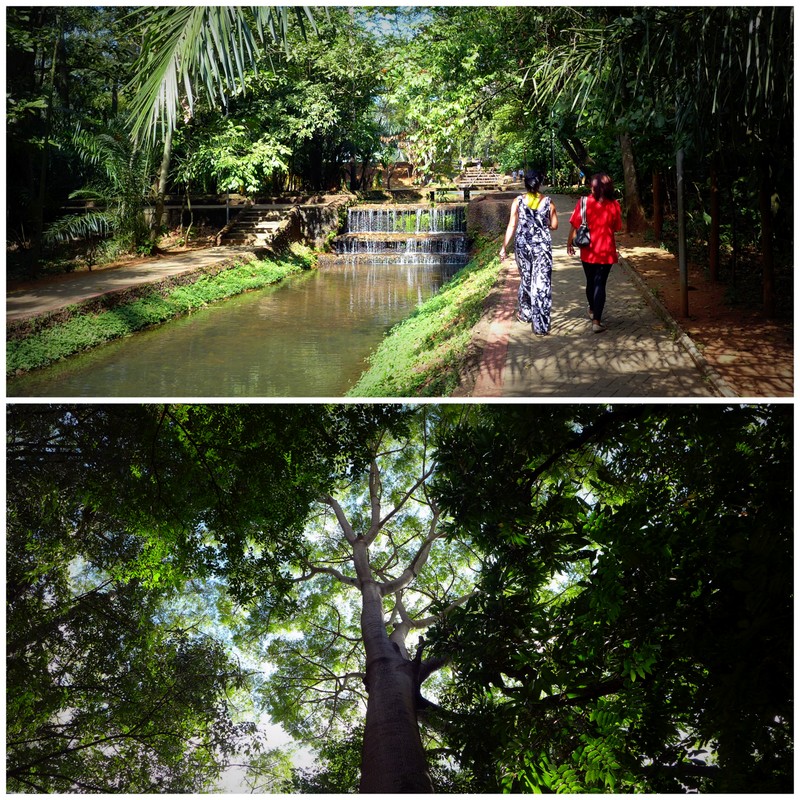
Stunning photos! I read this as I awoke and lazed, waiting for my tea to brew. No need for caffeine. The Niemeier buildings jolted me with their soaring, majestic glory. I really appreciate this blog. I read about the successes of Brasil but didn’t know about this well-planned city. Wow! I am so glad you shared this with us. Love, Mother
Awww shucks, Ma. I’m glad you enjoyed the photos.. I really found Niemeyer’s architecture fascinating and I am so happy to share, I’m so lucky to be able to see these great things.
Hi Peter, I was in Brasilia in June, about a month before you. I had wanted to visit since I was 6 years old, so it was a dream come true. It’s good reading your thoughts on here and you’ve inspired me to visit Goiania on my next trip to Brasilia. I spent most of my time in Sudoeste, which was built in the late 1990’s/early 00’s, so my experience of Brasilia was slightly different, but I did see a lot of the City. I found the SuperQuadras to be quite walkable, unlike the Esplanada. I’m so happy I discovered your blog by random accident!
Hi Duane, I’m honored to have you stop by my blog. Sounds like you hit a lot more pavement in Brasilia than I did, I would certainly liked to have spent more time there, one day hardly does it justice… thankfully there’s always next time 🙂 Enjoy your future travels and keep me posted if you find some interesting places!
Hi Peter,
Thank you for your reply. I may be having the opportunity to share my experiences and thoughts on Brasilia to a reporter with National Geographic sometime this month! She will be doing a story on Brasilia and wants some background information/perspective prior to her trip to Brazil next month. I’ll let you know how it goes! Also, I plan to see all my buddies down there sometime next year, so I’m looking forward to making good use of my Brazilian Visa!
Very cool, Duane. I’ll try and check this out, if it comes to anything please let me know, it would be a great read for sure. Boa viagem!